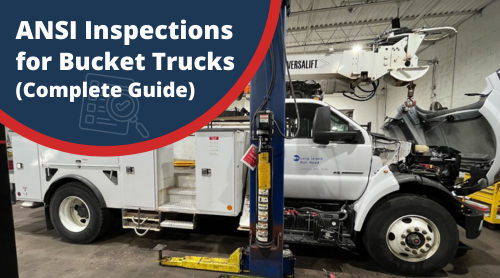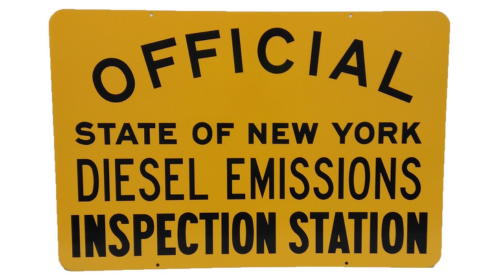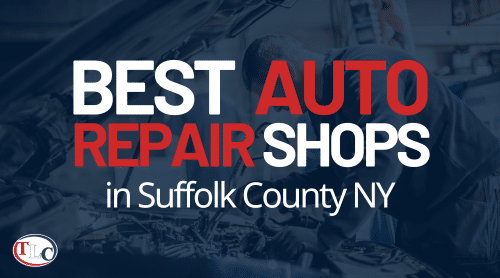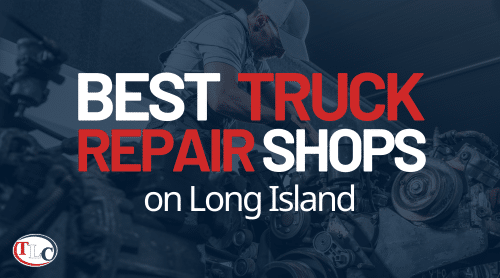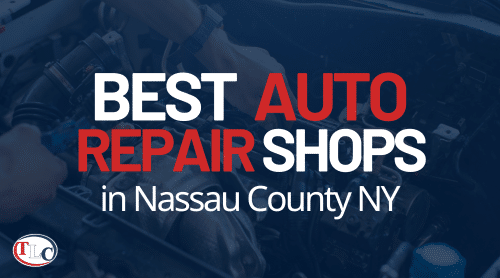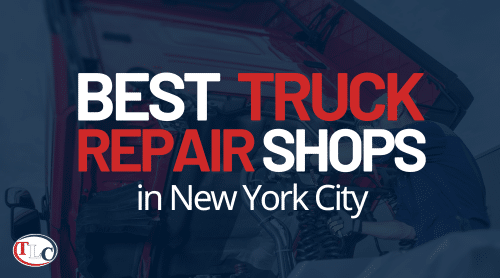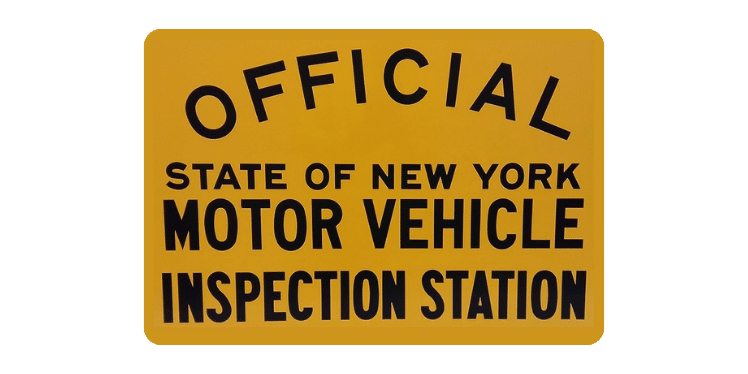What Is an ANSI Inspection?
The American National Standards Institute (ANSI) and the Occupational Safety and Health Administration (OSHA) set standards for workplace safety across the United States. As part of ANSI/SIA A92 & A92.5 section 6.7, Mobile Elevated Work Platforms (MEWP) require frequent and annual (periodic) inspections. These inspections must be carried out by a certified technician trained with ANSI inspection requirements and OSHA aerial lift annual inspection requirements.
The specifics of these requirements state:
“Owners shall ensure an annual inspection is performed no later than thirteen (13) months from the date of the prior annual inspection. The inspection shall be performed by a person qualified to inspect the specific make and model of MEWP. The inspection shall include all items included in the frequent inspection plus items specified by the manufacturer for an annual inspection, to include manufacturer's bulletins.”
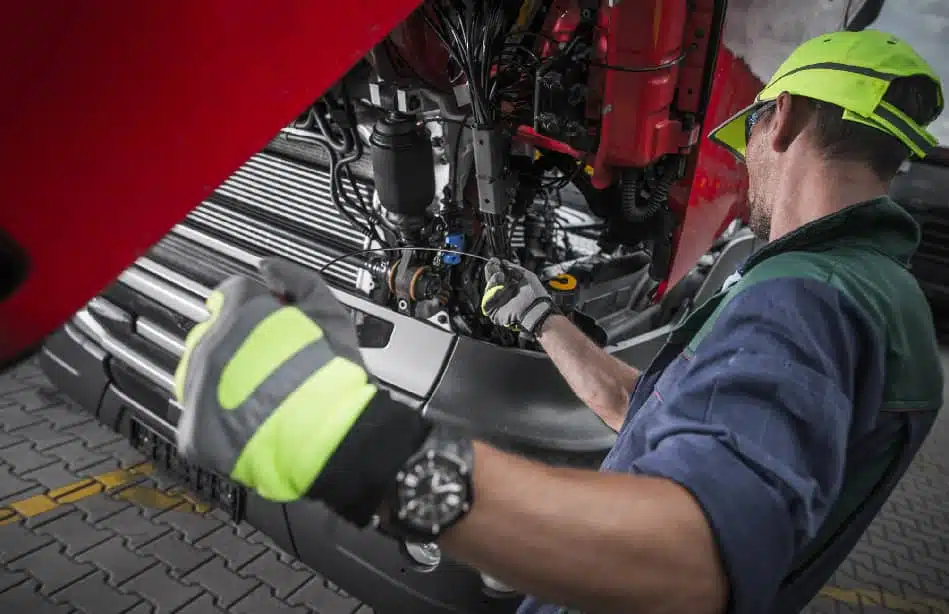
Because bucket trucks and other MEWP undergo frequent use and pose a significant potential workplace hazard due to operation errors, these ANSI inspections are crucial to ensure the safety of equipment and employees. Here, we cover how these inspections work for bucket trucks and the different types of MEWP that require annual and frequent inspections as part of their operation.
Why Is It Important for Bucket Trucks?
Bucket trucks are unique compared to other common vehicles. Not only are they specially made for specific jobs, but they undergo different work conditions than your standard workplace vehicle, necessitating frequent inspections. Another thing to consider is how these vehicles operate. Since they not only put employees far into the air but also have specialized electronic components that can malfunction, it makes sense that they need specialized inspections.
Not adhering to the ANSI inspection requirements not only does this put employees at risk but it can lead to catastrophic failures on these machines, which can cost the company significantly. For the safety of your workforce and the longevity of your bucket trucks, it’s crucial to adhere to all ANSI and OSHA inspection requirements for aerial lifts.
Understanding ANSI Inspections
During an ANSI inspection, a certified mechanic will check the following:
- Structural components: This includes outriggers, pads, structures, welds, bolts, hoses, cylinders, values, pins, and retainers.
- Chassis: Truck frame, the aerial sub-frame, suspension, PTO, pintle hook, and brake components.
- Pedestal: Mounting bolts, welds, pedestal structure, diagonal brace, attachment welds, and pins. This also includes the hydraulic swivel joint and other hydraulic components, swing drive gearbox mounting bolts, backlash between swing pinion and bull gear, electric collector ring, brushes, and lower control operation.
- Rotation bearing: This includes any welds and bolts, proper torque on accessible bearing bolts, and vertical movement.
- Turntable: The Turntable structure, bucket leveling cables, compensating chains and sprockets, hydraulic system components, and more.
- Lower boom: Includes the boom structure, lift cylinders, hydraulic system, push links, tie-down straps, and more.
As part of the structural check, a mechanic will also check things like the elbow, upper boom, platform (bucket), digger and auger (if applicable), winch, and general structural concerns. And this is only for the structural part of the guidelines the Department of Transportation in Minnesota put out.
This means that a certified technician will check even more bucket truck parts as part of an ANSI inspection, so working with a professional is crucial to prevent accidents and ensure equipment functionality.
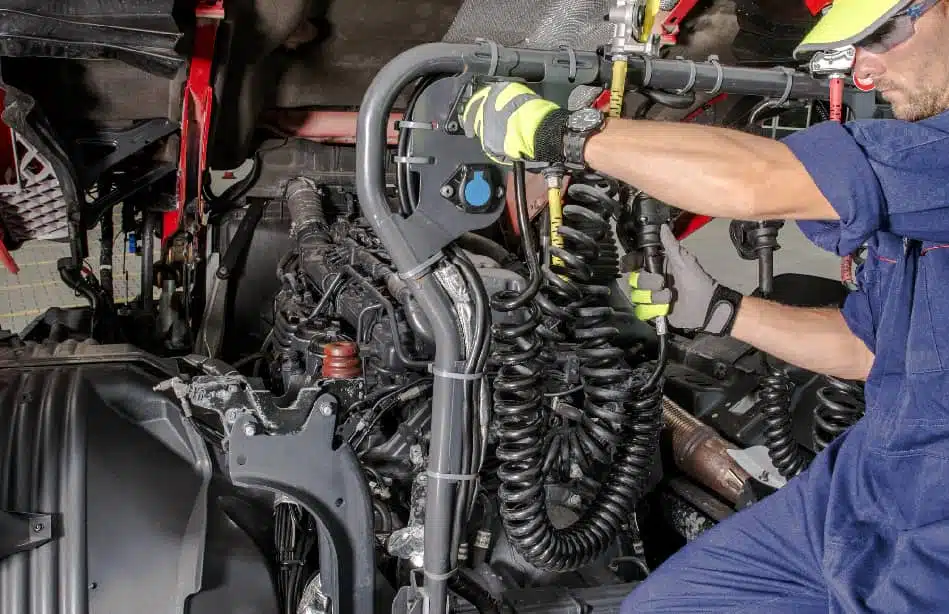
Why ANSI Inspection Matters for Bucket Trucks
ANSI inspections for bucket trucks (also known as cherry pickers) are crucial for the longevity of the vehicle. Not only do these complex machines have several points of potential failure, but any failure on the machine could lead to injury or at the very least a significant delay in operation. These vehicles must be visually inspected every 3 months or 150 hours of work (whichever comes first), as well as yearly as part of ANSI inspections.
Not only does this allow mechanics to catch small issues before they become large problems, but it ensures the safety of vehicle operators and workers at all times. It’s also a good idea to implement daily inspections to ensure operations go smoothly and there are no obvious problems at the start of a shift.
NYS INSPECTIONS ON LONG ISLAND
Schedule your New York State Inspection with us Today!
Working with a certified technician ensures your fleet stays in top condition and gives you a reliable team member to help repair any problems and stay on top of yearly inspections. Since inspections can take several hours, having a dedicated mechanic who knows what they’re doing on hand can greatly improve turnaround time and help you rest easy knowing your vehicle is in good hands.
Types of Bucket Trucks
When you say “bucket truck,” the average individual may imagine the different vehicles used in utility work to fix a powerline but have no idea of the wide array of vehicles that fall under this classification.
Let’s look at some different types of bucket trucks available and highlight how these vehicles utilize aerial devices in the field. We’ll discuss trucks, including insulated bucket trucks, crane lifts, aerial lift trucks, and more, and cover why using the right bucket truck for the task is crucial to the safety and longevity of your vehicle (as well as the persons using the vehicle!)
Insulated Bucket Trucks

Insulated bucket trucks are usually used for work on electrical wires. These trucks are made from dielectric materials (like fiberglass) to avoid electrocution and shorting out the wires during work. The boom and the bucket are made with dielectric materials, adding extra security to the already stable bucket truck design.
Crane Trucks

Crane or boom trucks have a crane built into the truck design. These vehicles unload and load materials onto the truck and are part of the bucket truck and utility truck design family. They have stabilizing pieces to keep the crane secured while loading and unloading and usually have a flatbed truck design to store more materials.
Boom Lifts

Boom lifts have similar functions to bucket trucks in that they’re used to reach high spaces. Unlike a bucket truck, boom lifts lift a person who controls the entire lift from the bucket or left area. These lifts are often used indoors in warehouses or other confined spaces, as they are usually smaller than bucket trucks.
Aerial Lift Trucks

Aerial lift trucks are another name for bucket trucks, and they share the same features as your average cherry picker. These vehicles have controls for driving in the chassis while also allowing a person to control the bucket while riding within it.
Utility Trucks

Utility trucks are a blanket category of different work vehicles. Bucket trucks and utility trucks are both made to carry work equipment, tools, and other things needed on the job site. These trucks are lightweight but made to carry everything people need in one vehicle, making them highly customizable and useful across different disciplines and workplaces.
Other Types of Bucket Trucks

There are several different types of bucket trucks outside of the ones we’ve discussed here. Telescopic articulated bucket trucks, over-center and non-over-center bucket trucks, and even track-mounted bucket trucks are all different styles of this versatile vehicle. Each vehicle is custom-made for its industry, meaning taking any bucket truck to the proper mechanic for ANSI inspections is important.
Annual Inspection Requirements by ANSI Standards
ANSI standard inspection requirements have specific tests and testing for all equipment under the “aerial personnel” category. This includes bucket trucks, aerial lifts, and the other variations discussed above. These checks must be done every 13 months.
Structural Inspections Required by ANSI Standards
The ANSI standard inspection covers these major sections:
- Structural Tests: This covers every structural part of the bucket truck, including but not limited to the boom, welds and pins on the boom, outriggers, chassis, pedestal, rotation bearings, turntable, lower boom, elbow, upper boom, platform or bucket, digger or augers (where applicable), winch (where applicable), and other general structural concerns.
- Hydraulic Systems Tests: Part of the structural testing involves checking the general health and movement of the hydraulic systems themselves and performing tests to ensure there are no issues with the system itself.
- Electrical Components Tests: These tests ensure there are no issues with the electronic components of the bucket truck, including within the chassis or bucket, as well as anywhere else on the vehicle itself.
- Safety Devices Test: This test ensures that all safety measures function appropriately and will continue to function in case of an emergency.
- Functional and Operational Test: This test checks to ensure that all portions of the bucket truck function and operate as expected with no issues as they would during a standard day of operations.
- Dielectric Test: Specifically for insulated bucket trucks, this test ensures that the dielectric materials within the bucket truck function correctly and that there are no issues in the event of an electric current. This test specifically focuses on the upper and lower booms, buckets, liners, FRP extensions on diggers (where applicable), tool circuits, and upper control systems.
Once an inspection is complete, you want to keep all written records of the inspection, results, and any issues and their repairs in your records. This ensures you’re compliant with all ANSI and OSHA regulations and have a record of all tests and inspections performed on your vehicle.
NYS INSPECTIONS ON LONG ISLAND
Schedule your New York State Inspection with us Today!
Additional Inspections Required by ANSI Standards
ANSI standards also require the following inspections:
- Acoustic Emission (AE) Test: This test tests fiberglass and steel structures using sensitive sensors. The testing individual will use a load of 1½ to 2 times the recommended limit on the boom. The sound system can catch any defects in the system caused by the increased load.
- Magnetic Particle Inspection: By applying magnetic particles to critical welds, plates, and castings during a visual inspection, the inspector can spot any surface cracks on ferrous materials.
- Dye Penetrant Inspection: Similarly to the magnetic particle inspection, this test checks critical welds, plates, and castings on non-ferrous materials and identifies any surface cracks.
- Ultrasonic Inspection: This test checks for flaws in accessible pins. However, this test works best on pins with flat ends and no drilled holes.
Torque Testing: This test checks critical fasteners in accessible areas, including the upper and lower rotation bearing, swing gearbox, boom connections, and platform mounting.
Safety Devices and Requirements for Proper Operation of Bucket Trucks
Employees working on a bucket truck should all wear the required personal protective equipment (PPE). This PPE includes:
- An ANSI-approved hardhat
- Eye protectant
- A fall restraint or fall arrest system
- Insulated gloves where electrocution is possible
The vehicle itself should have all manuals, stickers, labels, and operational equipment, as well as posted weight limits and other signage needed for operation.
It is recommended the vehicle have traffic cones, warning signs and flags, a first aid kit, a fire extinguisher, and emergency rescue equipment on hand at all times.
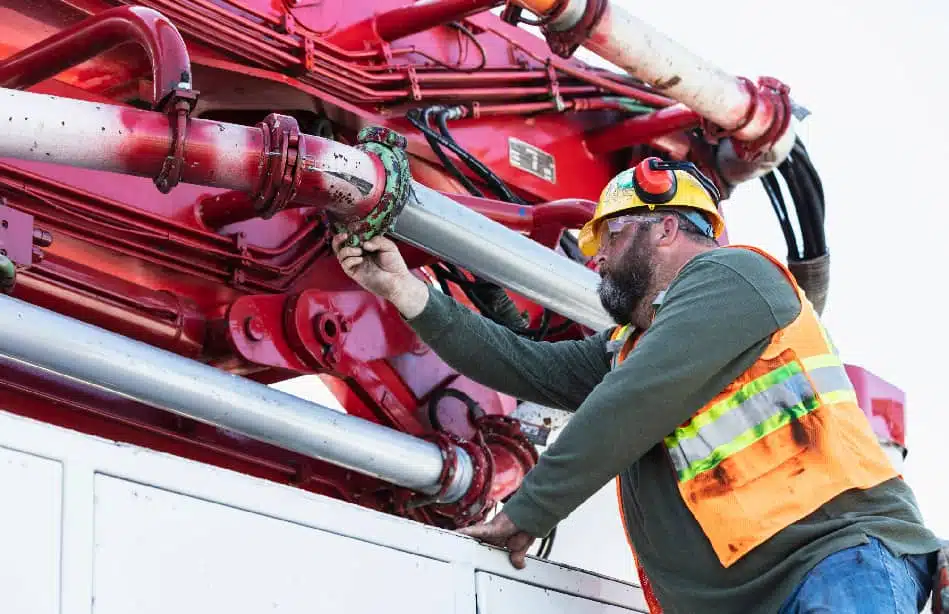
Factors to Consider During a Visual Daily Inspection for Bucket Trucks
The recommended items to check during a visual daily inspection (as outlined in a fantastic guide by Plumas County, California) include the following:
- Tire pressure
- Lights
- Beacons
- Vehicle fluid levels
- Outriggers and pads
- Emergency brake
- Leveling system
- Hydraulic lubrication
- Pin retainers
- Structural and mechanical integrity
- Communications equipment
- Jib boom and other material handling
- Boom and boom rest
- Electrical circuits, including ground fault interrupters, start-stop, and auxiliary circuits
- Controls are plainly marked to their function
- Test lift controls
- Traffic cones stored
- Warning signs and flags stored
- First aid kit stored
- Fire extinguisher present
- Emergency rescue equipment checked and on board
The Role of Dielectric Testing
Dielectric testing for bucket trucks is carried out during an ANSI inspection on trucks rated with dielectric components. This includes insulated bucket trucks and other insulated aerial lift devices used in environments with potential electrical hazards. These tests ensure that the dielectric materials are properly functioning and insulate the vehicle against electric shock.
Dielectric testing ensures that:
- The insulation capacity holds up to peak voltage during rating
- The user is adequately protected from electrical hazards
- There are no signs of damage, aging, or defects in the materials
- The device is compliant with OSHA and ANSI standards
It is important to note that while these dielectric tests are important, a dielectric material does not guarantee protection from electric currents, so all safety precautions should be taken when working in an environment where electrical current exposure may occur.
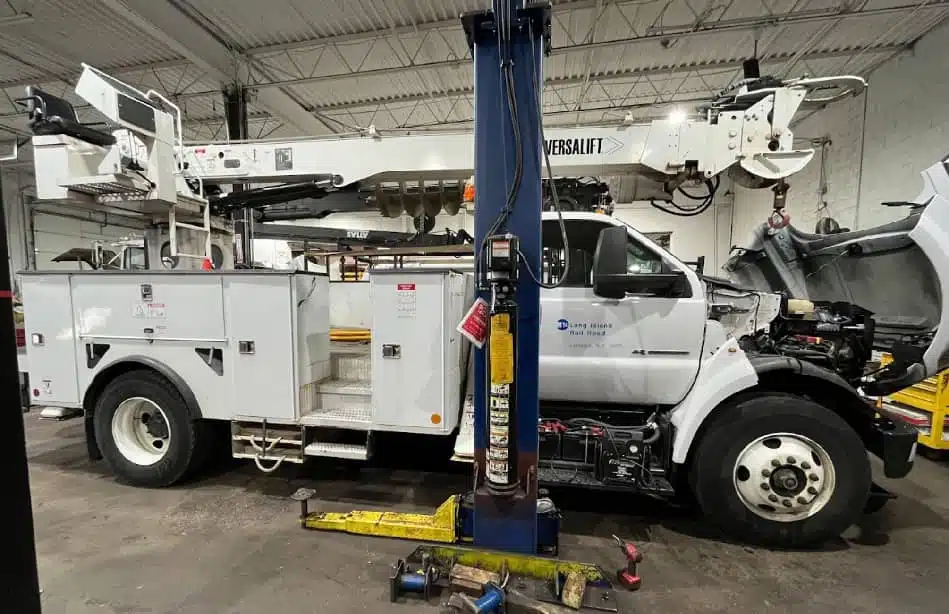
FREQUENTLY ASKED QUESTIONS
What are the key components covered in an ANSI inspection for bucket trucks?
The key components covered in an ANSI inspection for bucket trucks include:
- Structural Tests
- Hydraulic Systems Tests
- Electrical Components Tests
- Safety Devices Test
- Functional and Operational Test
- Dielectric Test
- Acoustic Emission (AE) Test
- Magnetic Particle Inspection
- Dye Penetrant Inspection
- Ultrasonic Inspection
- Torque Testing
These tests ensure that the bucket truck is working to full capacity, and has no defects. It also ensures that the vehicle is not experiencing odd wear and tear, or aging of materials, especially in the case of dielectric (insulating) materials.
How often should a bucket trucks be inspected?
Bucket trucks should be inspected daily before use. Any bucket trucks need further inspection every 150 hours of use or three months of operation, whichever is sooner. A full ANSI inspection is required 13 months from the date of the last ANSI inspection, and a bucket truck should not be operated until any defects or damages are addressed fully.
What is ANSI SIA standards A92 5 and A92 6 Section 6.6 2?
These standards require that an aerial platform be subject to frequent inspections. According to these standards, an inspection should happen every 150 work hours or three months, whichever is sooner. It also recommends daily inspections before use.
How can I prepare my bucket truck for an ANSI inspection?
Be sure that your bucket truck has all manuals, instruction guides, labels, and safety equipment on hand before an inspection. If you notice any defects, or issues, or have concerns, point them out to the mechanic before your inspection. Be sure to look up inspection requirements and be on time with your inspections, as well as keep records of previous inspections on hand in your records.
Conclusion
Now that you have a better idea of the ANSI inspections and requirements, ensuring your bucket truck follows all guidelines and rules is crucial. Make sure to comply with the frequent inspections rules (150 hours of work or three months, whichever is sooner) and bring your vehicle into an accredited ANSI inspection provider once every 13 months. Our team at TLC Auto & Truck can set you up with an ANSI inspection appointment today, so you can be sure to stay on top of your inspection requirements.
If you have other questions about bucket trucks, vehicle guidelines, repair, and more, check out the other resources on our website or our other informative blogs.


